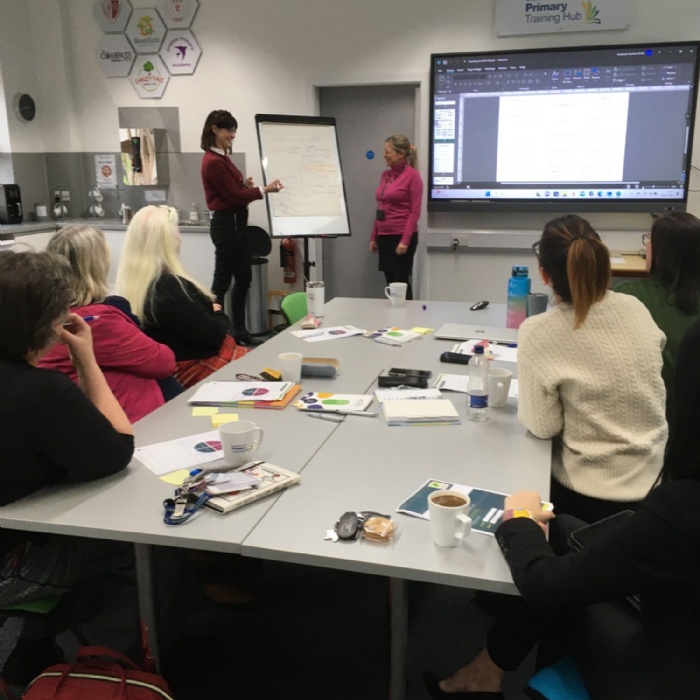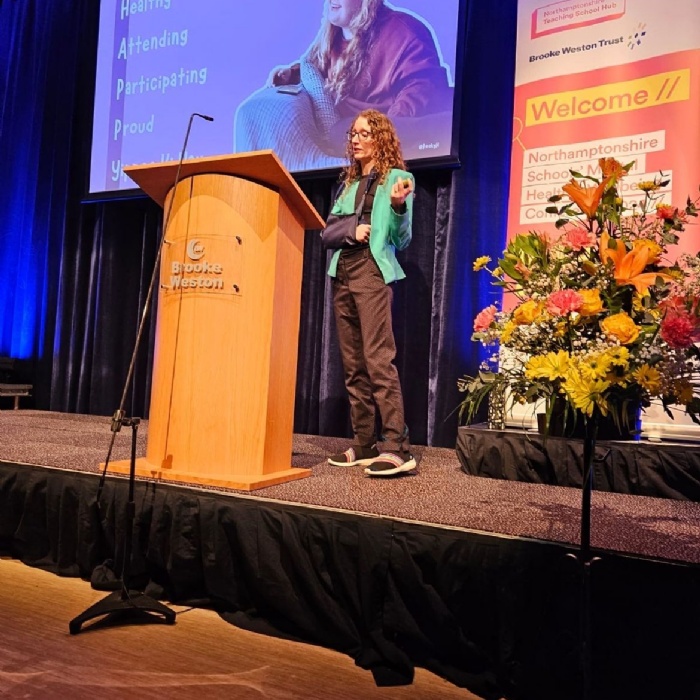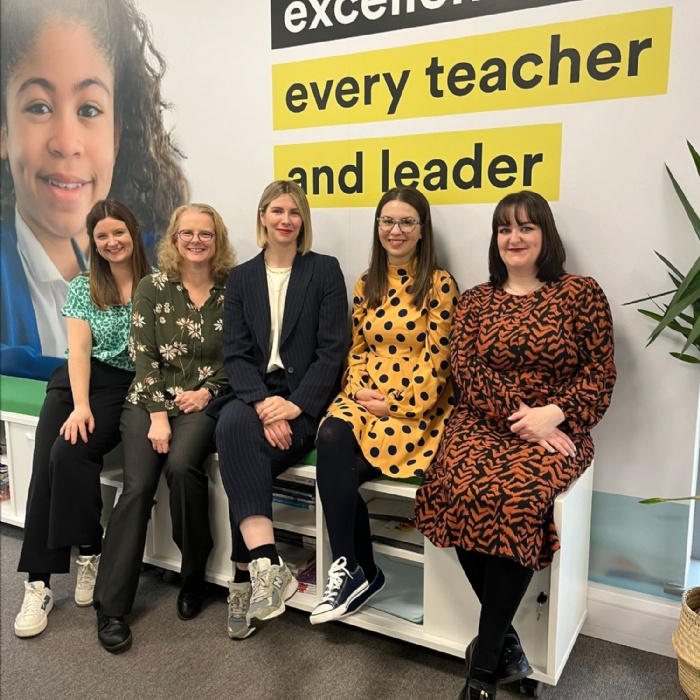Believe Big round-up
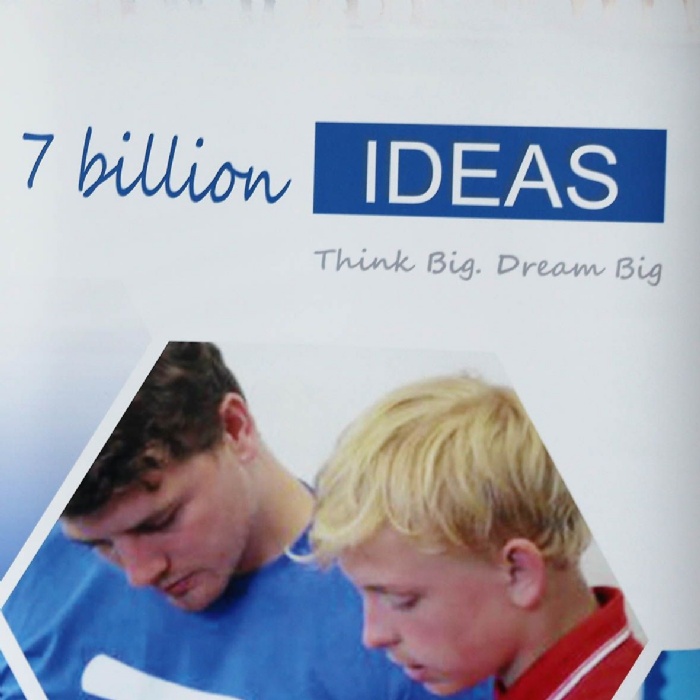
It was a day of innovation and celebration at the finals of the Believe Big competition when teams from across our Trust secondary schools showcased their potentially life-changing ideas.
Many of the teams developed concepts to help the homeless, those with special needs or schemes to make the most of the world’s resources and the judges commended the teams on their selfless attitude and the way that many of their ideas could actually become a reality.
Here’s a brief overview of some of the projects:
Brooke Weston Academy:
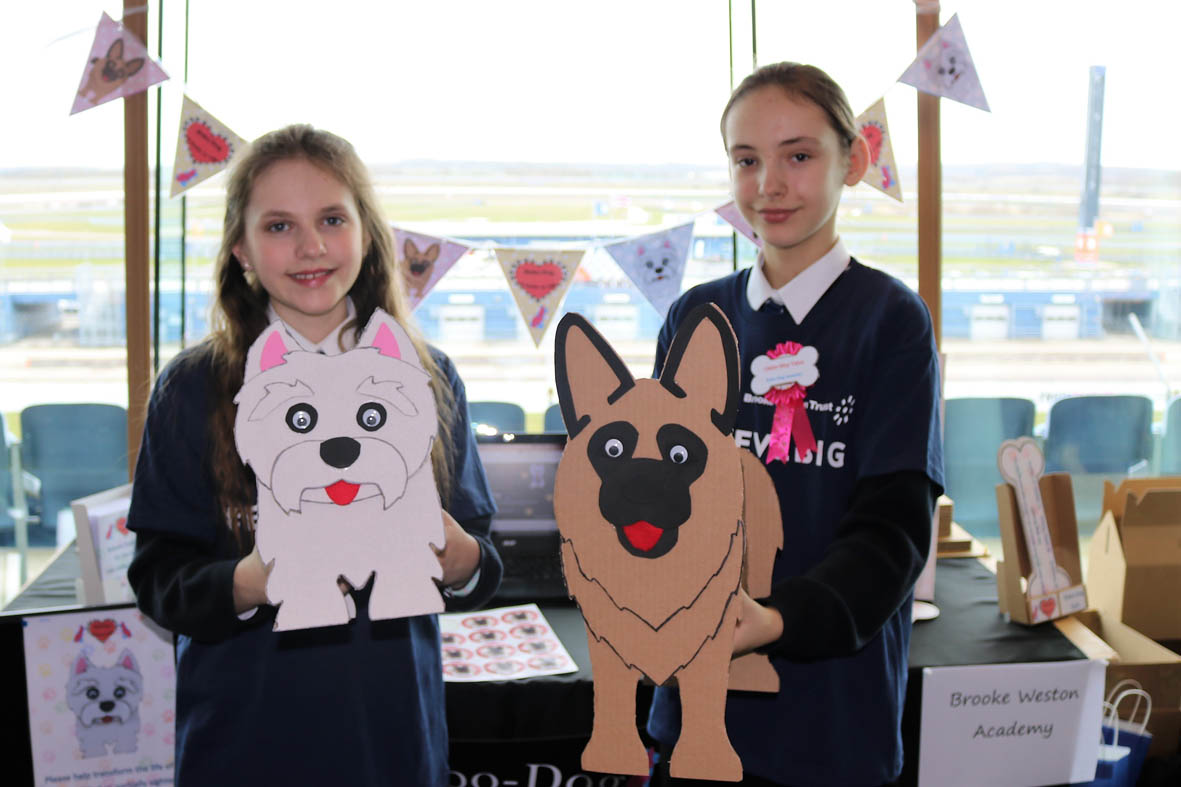
Year 7 students Libbi May Yates and Amelia Wright came up with idea of RoboDog, an electronic guide dog, after learning about how much guide dogs cost to buy and train. Amelia said: ‘I got the inspiration when some guide dogs visited the Guide pack that I go to. It costs so much money to train a guide dog and there are lots of people on the waiting list.’
Libbi May said ‘As it’s a robot it is easier to look after as you don’t have to feed or walk them. I have enjoyed the project, it has been really fun.’
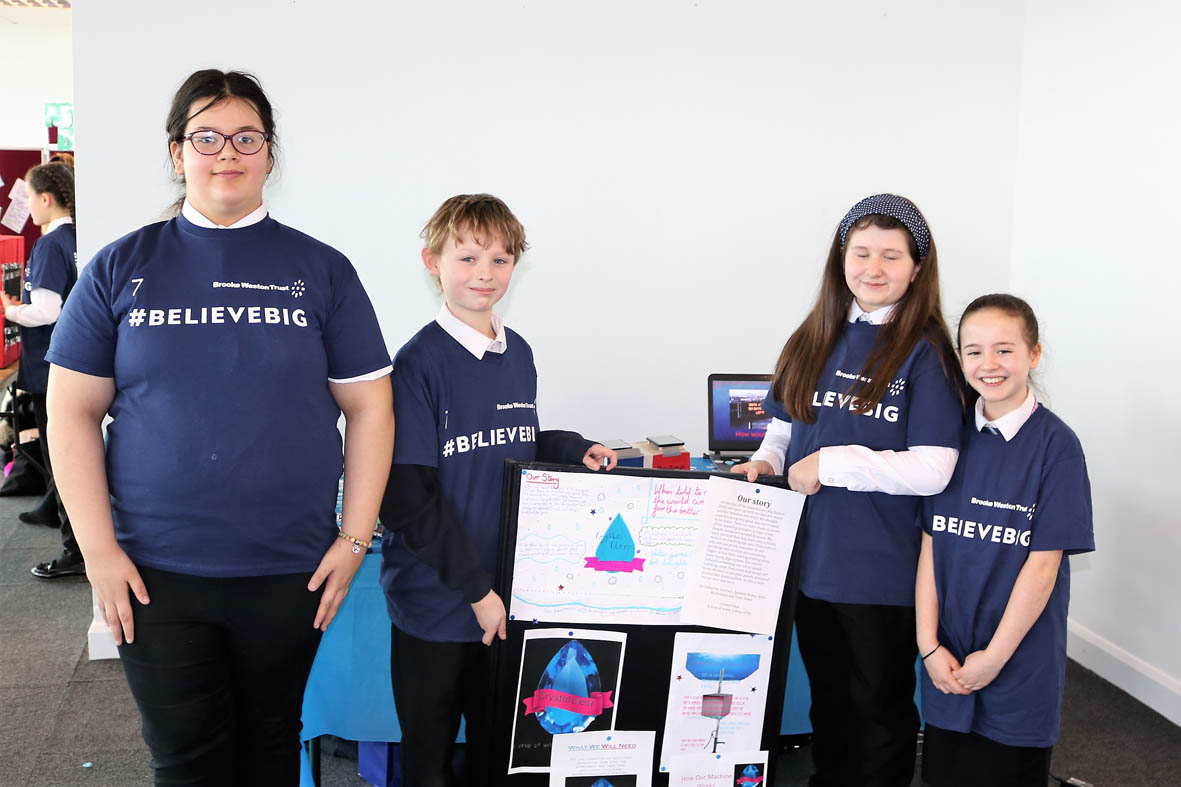
Sofia Muhammad, Tyler Green, Catherine Darroch and Jasmine Bailey developed a solar powered water purifier to turn sea water into drinkable water. They made a model showing how they would boil and cool the water then pump it to where it was needed.
Corby Business Academy:
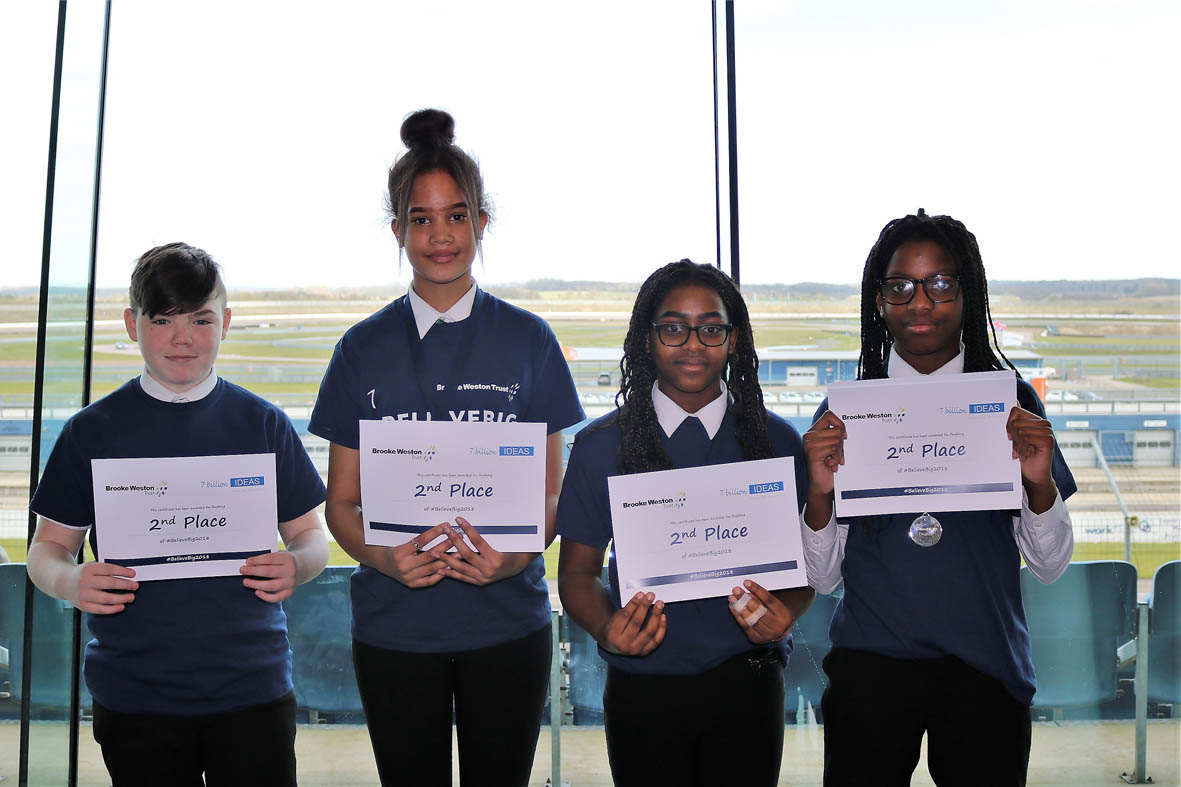
Students Noorat Kitima, Hayley Norman, Sophia Yanyongo and Caylem Wolfenden came up with Snaplexia, which combined a fashionable snap band with a transparent overlay to help people with dyslexia or visual problems.
They said: ‘We got the idea because we have a friend with dyslexia and she has tried our sample one. They can be produced in different colours and a percentage of money raised would go to the British Dyslexia Association. We wanted to make it fashionable, affordable and discreet.’
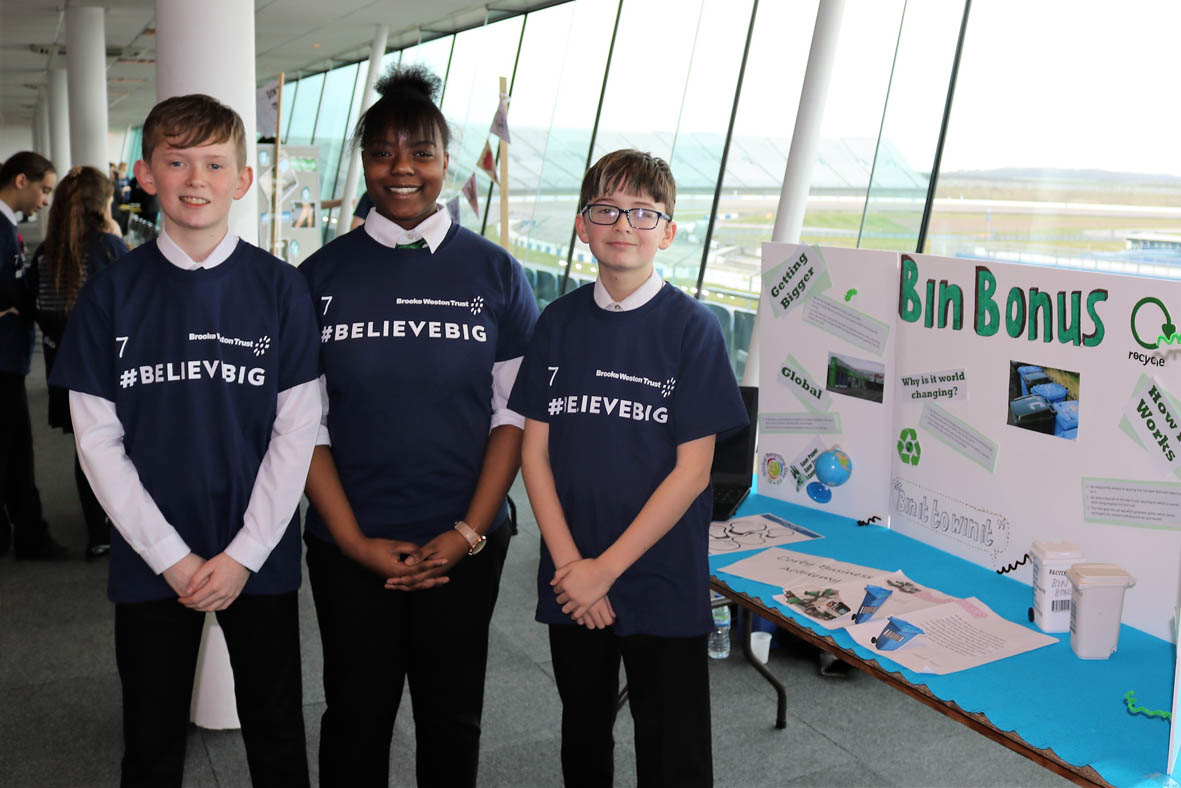
‘Bin Bonus’, a recycling awards scheme, was the brainchild of
Sean Savage, Jamie Potter and Elaine Kahwa. Jamie said: ‘Bin Bonus measures the amount of recycling using a bar code on the wheelie bins which is scanned and weighed on the way to the bin truck. It generates points so the more you recycle the more points you get.’ Elaine added: ‘I liked creating ideas with my friends and developing it into a business idea.’
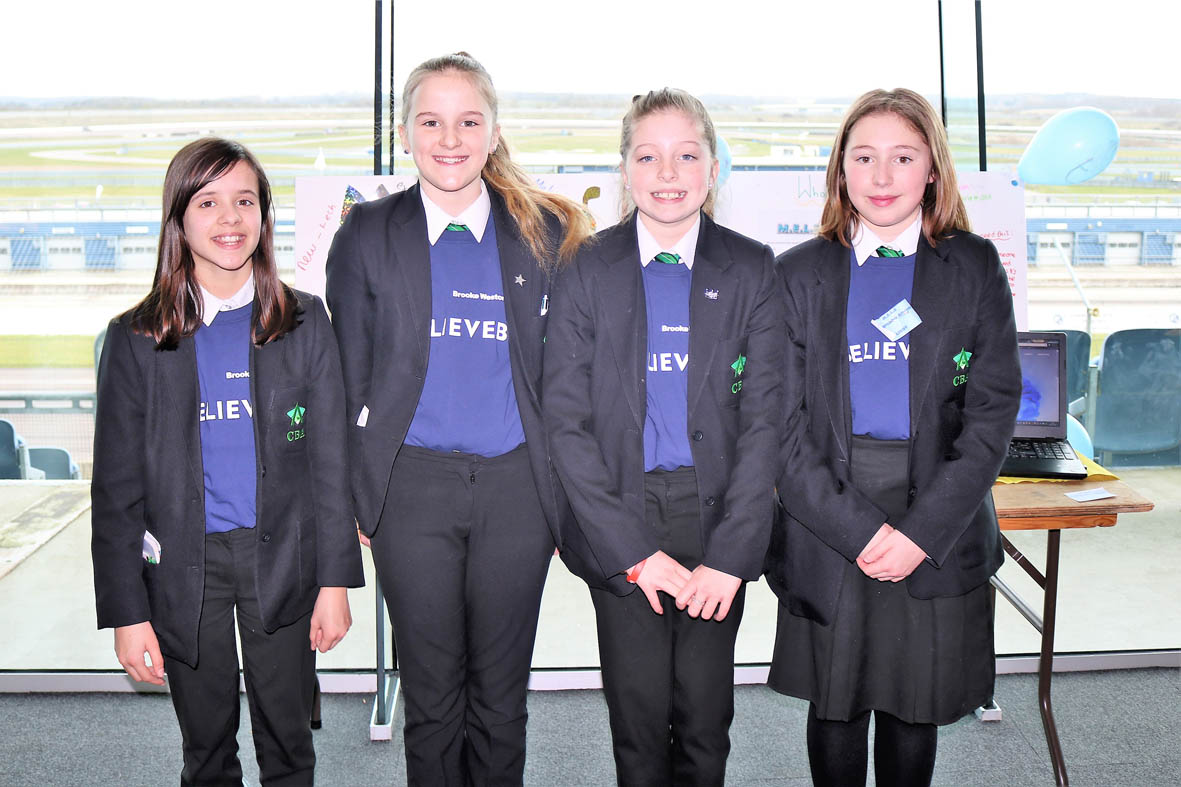
MELS, comprising Mikaela Dunnill, Erin Bannigan Libby Douglas-Whittaker and Scarlett Dalziel developed ‘Holographic Air Time’ a 3D messaging service so that a hologram of a person appears as you speak to them on the phone.
Erin said: ‘I really liked working together because we all had a role. Mikaela and I developed how it would work and Scarlett made the models.’
Libby said: ‘Working as a team is better than working by yourself and, if you have an idea you should share because it could be the next best thing.’
Scarlett added: ‘I think that this could actually be possible and I have enjoyed the project because we have managed to make all the models and have had fun with it.’
Corby Technical School
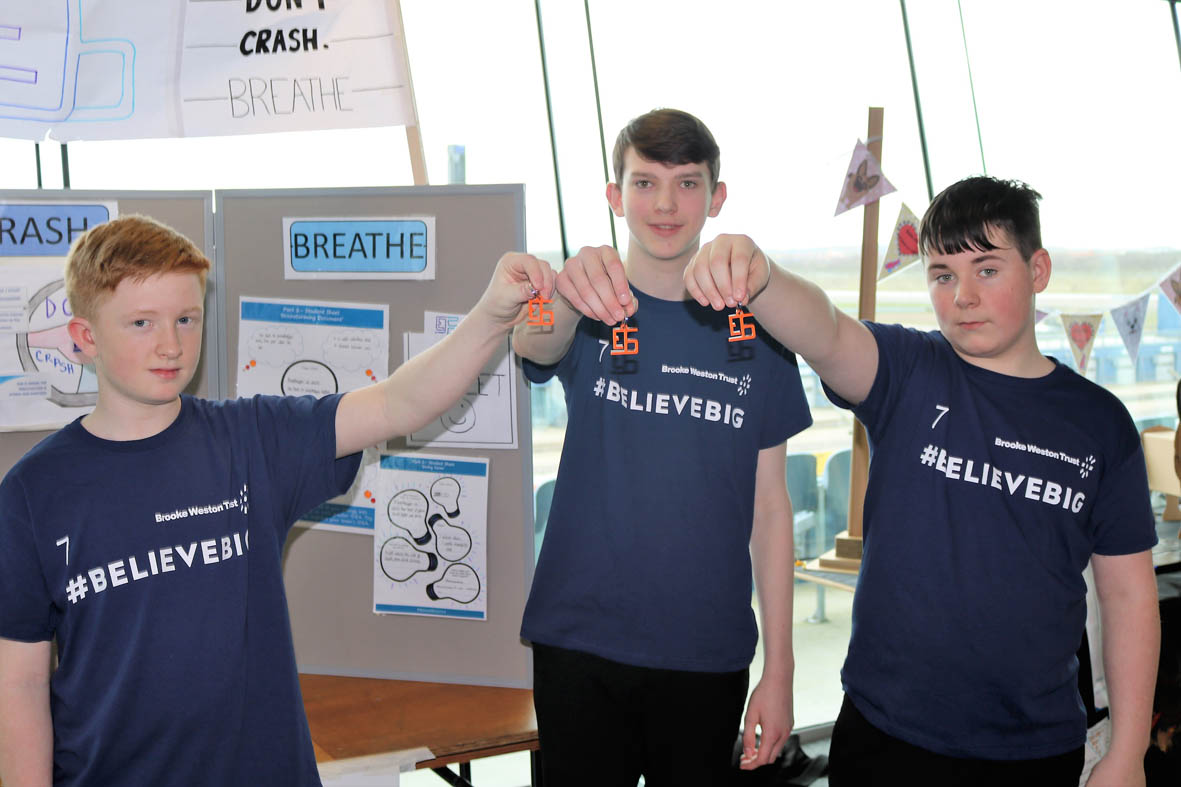
Team EJS comprised Eoin McCann, Jack Botfield and Sam Carr
who developed a breathalyser system for cars, immobilising the vehicle if the driver was over the limit.
Eoin said: ‘I liked the technical aspect as I came up with the idea and how it make work.’ Jack said: ‘I enjoyed designing the poster and we also made 3d printed keyrings.’ Sam added: ‘I really enjoyed making the stand, the posters, models and banners. We have worked well as a team.’
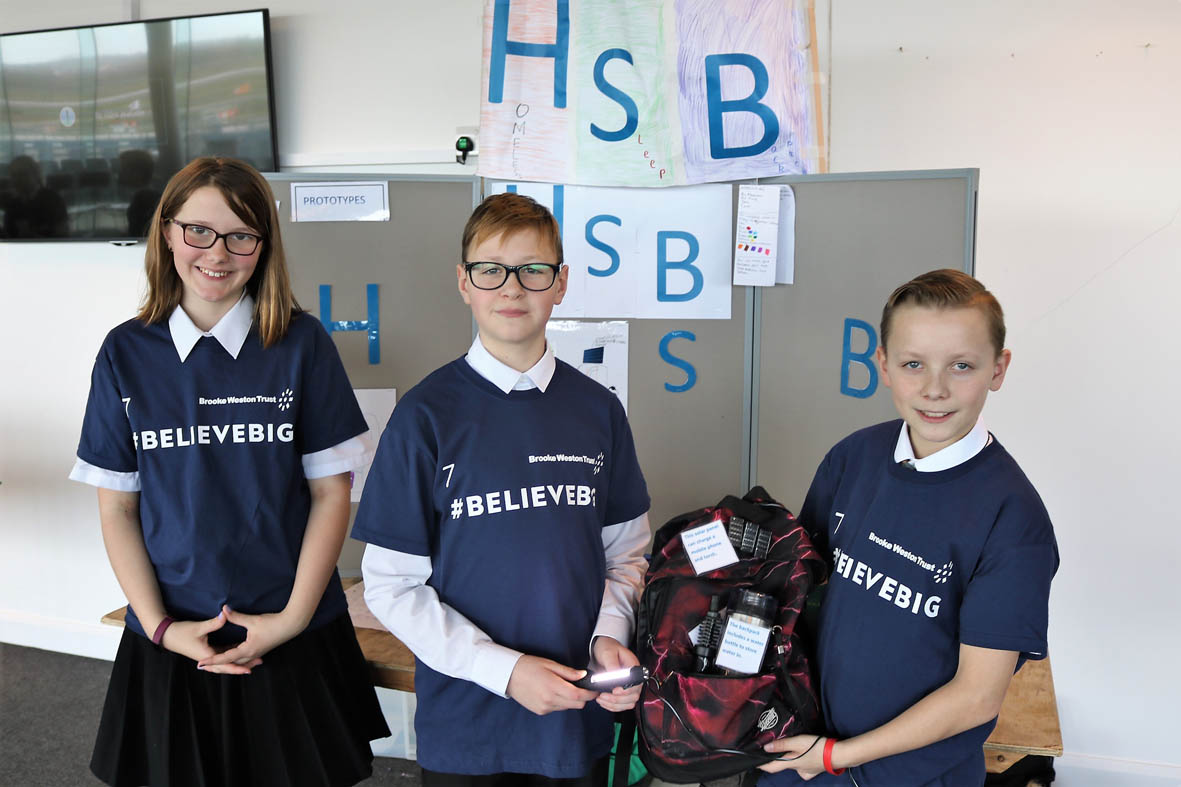
A real life social issue provided the starting point for a second CTS team. Marshall Mackie said: ‘We came up with this idea when I saw a homeless man outside McDonalds. When the Believe Big project came along I thought of the idea of the HSB or Homeless Sleep Backpack.
‘It contains a mattress, foot-pump, torch and has solar panels on the top to charge the torch or other electronics. This should prevent them from sleeping on the floor and dying of pneumonia or hypothermia.’ Marshall worked on the project with Grace Myskow and Pascal Ziemski.
Kettering Science Academy
KSA students Nerissa and Keane came up with the idea of having a surveillance device on school uniform as a way to cut down on anti-social behaviour while Year 8 students
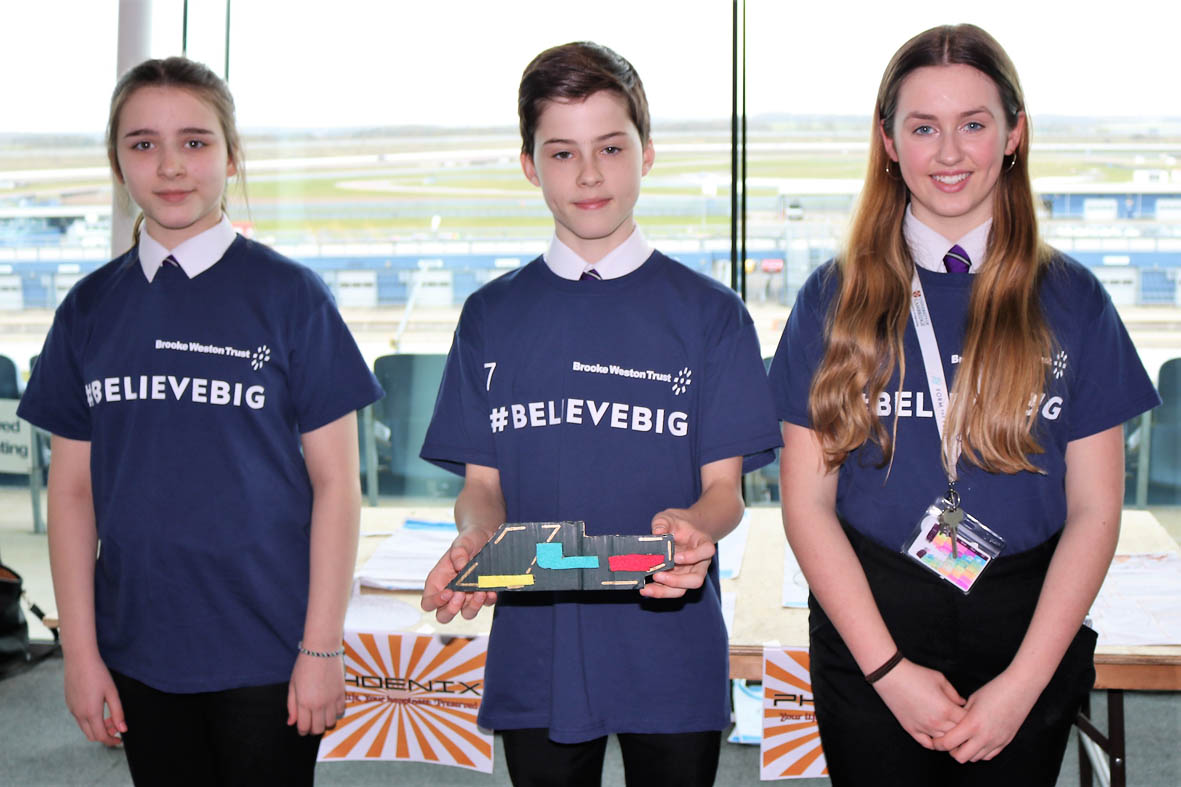
Rebecca, Sean and Charlie developed Phoenix, a vital signs tracker that could be implanted under the skin to measure temperature, heart rate and alert medical professionals in case of an emergency.
Sean said: ‘Most of the technology already exists so this project is about putting it all together.’ Charlie said: ‘I came up with the name Phoenix and did the illustrations. The process has been really fun.’ Rebecca added: ‘I liked the fact that it was about team building.’
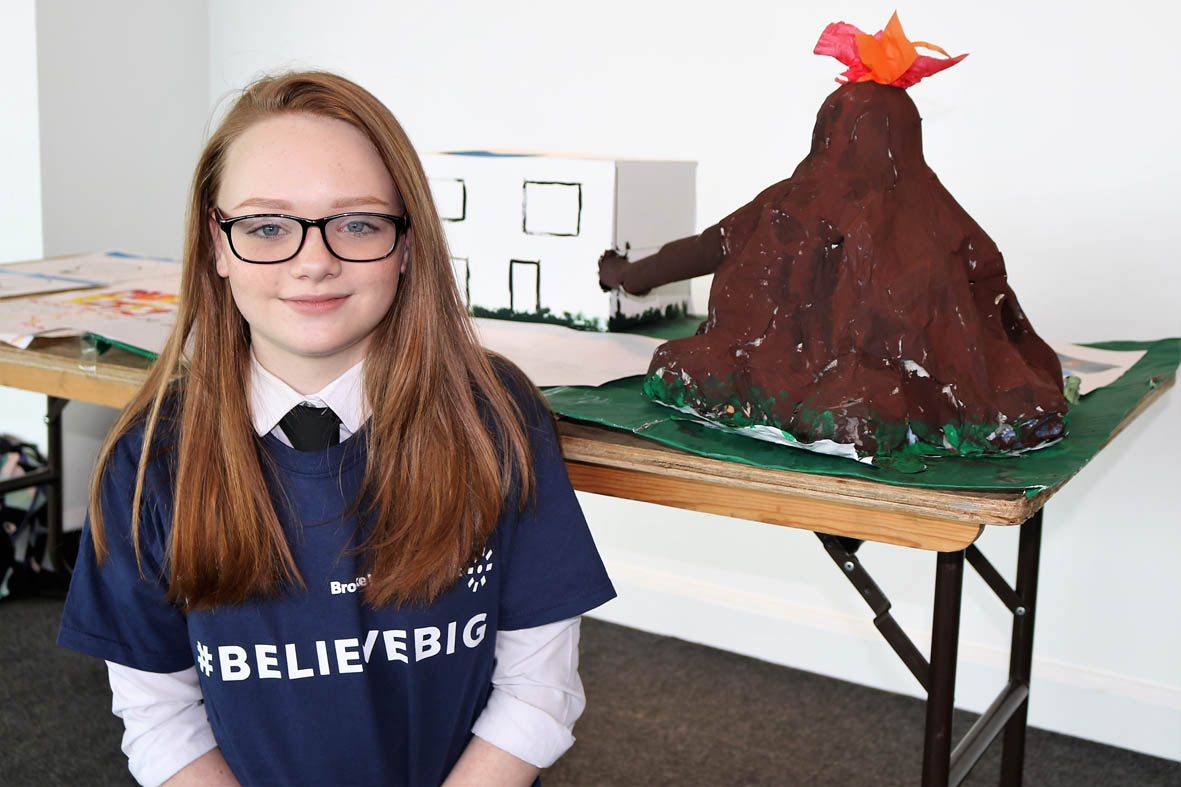
Esme Bayliss won the prize for best model for her team, Mount Energy,
which harvested energy from volcanos. She said: ‘It is a relatively practical idea. I did the posters, the model and most of the creative items. It was a bit daunting as, due to illness and trips I presented the ideas on my own.’
Thomas Clarkson Academy
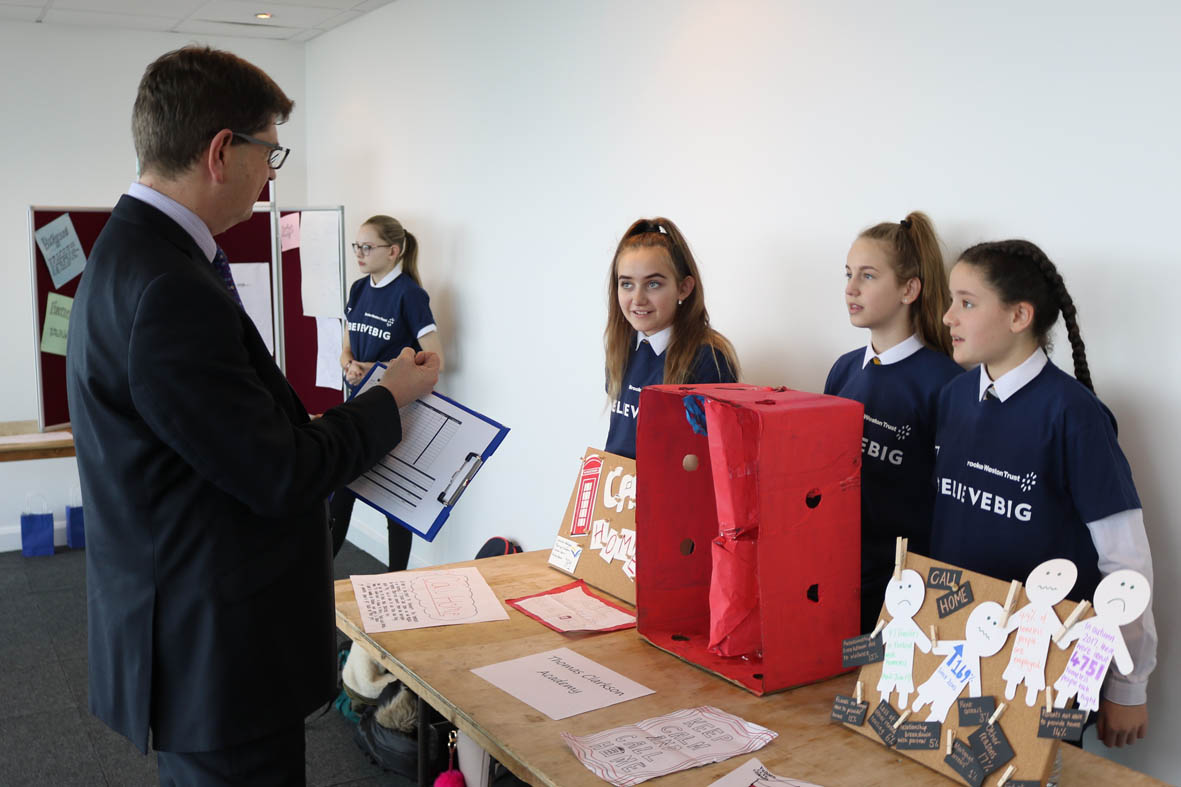
Thomas Clarkson Academy’s Year 7 team, made up of Grace Black, Lauren Davis and Patricija Chudzik, developed a ‘Call Home’ project, with the idea of using telephone boxes to provide facilities for the homeless, such as showers, beds, washing machines and clean clothes. The boxes would be accessed via a token system.
Lauren said: ‘Lots of us thought of different ideas and this was the best one. I thought that we should do something about homeless people and Grace thought about using telephone boxes.’
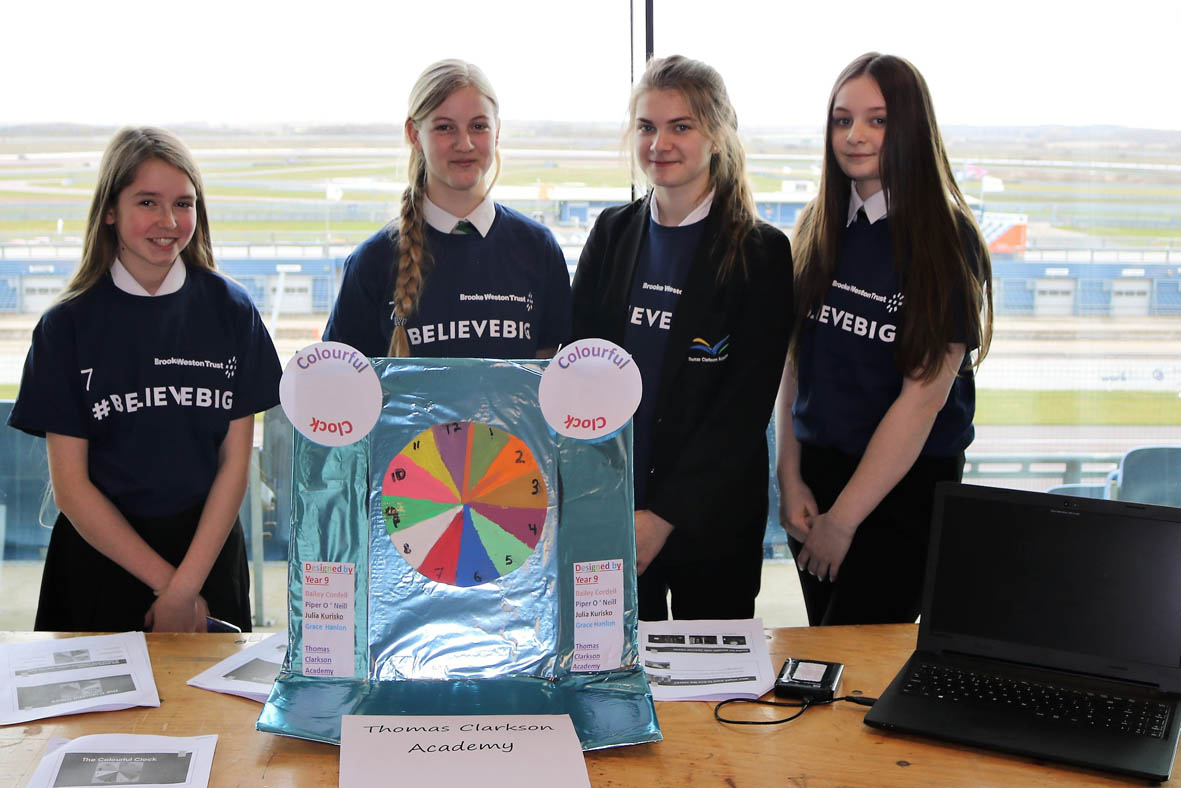
Bailey Cordell, Piper O’Neill, Julija Kurisko and Grace Hanlon came up with the idea of a colourful clock which uses light to help children learn the time, particularly those with special needs. The clock’s coloured face would be linked to the room lights, so as the light changes on the clock, the lights in the room change colour to let you know it’s a different hour.
Grace said: ‘It can help people with special needs as the colours are more obvious than numbers and it can also help children learning to tell the time as obviously they can see the colour. It can help parents with bedtime routines so that children can be a bit more independent. Taking part in this project has helped us learn how to connect with people that you don’t normally talk to. Creating something awesome out of nothing has been really nice.’

The third team, made up of Elle Hunt, Keita Butnorjus and Libby Amor, had the idea of creating a ‘yo-yo’ phone case. The phone case is attached via a retractable line to the user’s finger, meaning that, if it is dropped, it automatically bounces back, rather than smashes on the floor.
Libby said: ‘We would make it in different colours and we would need to have it at a reasonable price so that it is affordable.’




